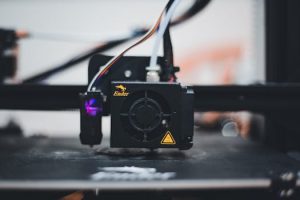Circular Economy Electronic Design: Regenerative Technology Manufacturing Strategies
The world of technology is constantly evolving, and the electronics industry is no exception. As consumers continue to demand innovative products at competitive prices, the pressure for manufacturers to keep up with the latest trends and technologies is higher than ever. However, this constant cycle of production and consumption comes at a cost to our planet. The linear model of take, make, and dispose of has resulted in a staggering amount of electronic waste and pollution. In response to this growing issue, the concept of circular economy electronic design has emerged, bringing with it the promise of regenerative technology manufacturing strategies.
What is Circular Economy Electronic Design?
Circular economy electronic design (CEED) is an approach to product design and manufacturing that aims to reduce waste and promote sustainability. It is based on the principles of the circular economy, which focuses on keeping resources in use for as long as possible through reuse, repair, and recycling. CEED takes this concept a step further by incorporating regenerative technologies into the design and manufacturing process.
Regenerative Technologies in CEED
Regenerative technologies refer to processes and systems that have the ability to restore or renew themselves and the environment. In the context of CEED, this includes using renewable energy sources, designing products with biodegradable materials, and implementing closed-loop production systems that minimize waste and emissions. By utilizing these technologies, CEED aims to not only reduce the environmental impact of electronic products but also contribute to a more sustainable future.
The Importance of CEED in Electronic Manufacturing
The production of electronics has a significant impact on the environment, from the extraction of raw materials to the end-of-life disposal. The use of non-renewable resources and hazardous chemicals in the manufacturing process has led to widespread pollution and health hazards. CEED offers a solution to this issue by addressing each stage of the product life cycle, from design to disposal.
Reducing Waste through Design
The traditional linear model of production results in a high volume of electronic waste, with only a small percentage being recycled. CEED tackles this problem by designing products with a focus on durability, reparability, and recyclability. This means using materials that can be easily disassembled and recycled, as well as designing products that are modular, allowing for easy repair and upgrades. By extending the life of electronic products, CEED reduces the need for constant production and minimizes waste.
Implementing Closed-Loop Systems
In addition to designing products for circularity, CEED also incorporates closed-loop systems into the manufacturing process. This involves recycling and reusing materials and components from old or defective products to create new ones. By doing so, CEED reduces the demand for new resources and minimizes the environmental impact of production.
The Future of CEED
The concept of CEED is gaining traction in the electronics industry, with companies such as Dell, Philips, and Apple embracing it in their product design and manufacturing processes. The global market for sustainable electronics is projected to grow significantly in the coming years, indicating a shift towards more eco-friendly practices. As consumers become more environmentally conscious, the demand for circular and regenerative electronic products is expected to increase, further driving the growth of CEED.
The Role of Governments and Consumers
While the adoption of CEED by companies is crucial, governments and consumers also play a significant role in promoting sustainability in electronic manufacturing. Governments can encourage the adoption of CEED through policies and regulations that promote sustainable practices and tax incentives for companies that embrace them. On the other hand, consumers have the power to influence the market through their purchasing decisions. By choosing products designed and manufactured using CEED principles, consumers can drive the demand for more sustainable electronics.
Conclusion
Circular economy electronic design offers a promising solution to the growing issue of electronic waste and environmental degradation. By incorporating regenerative technologies and promoting a more circular approach to product design and manufacturing, CEED aims to reduce waste and promote sustainability in the electronics industry. As the concept gains momentum, it is vital for all stakeholders, including companies, governments, and consumers, to work together towards a more sustainable future.











